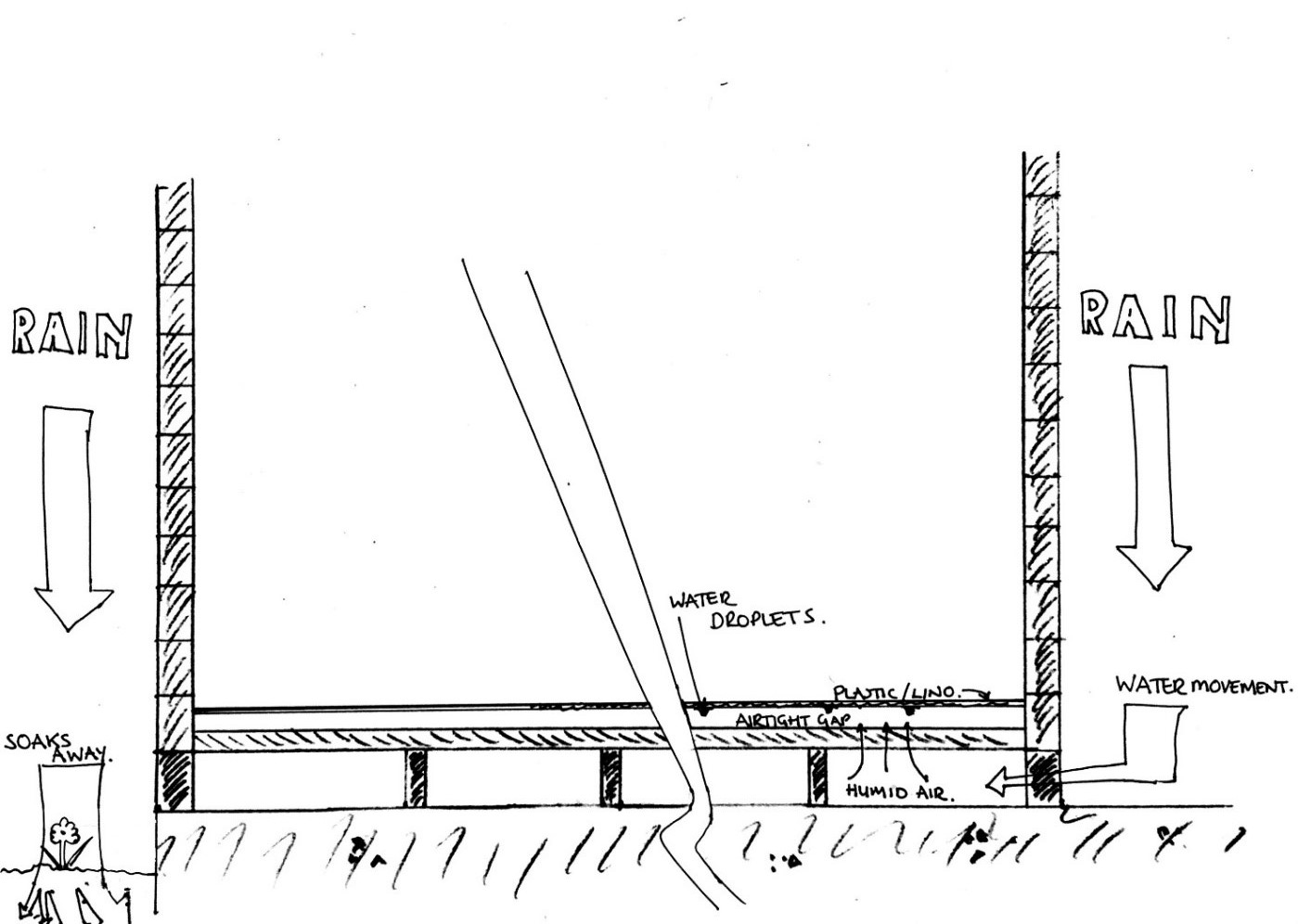Back to Expert Advice
Introduction
Wood and water don’t mix well unless you're in a boat, and even then the wood needs to be protected! So what are the Causes, Implications and Preventive steps?
Causes of moisture
-
Moisture from Concrete
Concrete slabs with more than 12% moisture content at the time of log cabin insulation can easily cause the floorboards to rot or warp. Joists laid on concrete can absorb moisture from the concrete, and that moisture seeps into the wood flooring and the walls. Water left standing and moisture that seeps into the wood can also lead to wood stains, mould or rot.
-
Moisture from Outside
Unprotected timber walls, doors and windows can allow moisture to penetrate the wood. If the base for your log cabin is bigger than the cabin base, the rain can run underneath. This is because rainwater can drip onto the base from the roof overhang, or water will run down the wall onto the base.

Implications of Moisture
Over time, prolonged condensation causes mould in various places around the log cabin. Mould grows on organic materials, for example, wood, all it then needs to thrive is oxygen and moisture.
If there are excessive amounts of moisture there is the possibility of Wet Rot setting in. Wet rot is basically the timber decaying naturally in the presence of high levels of moisture. It may be that water is collecting on the timber. The problem may just be damaged paint finish on the timber allowing the actual wood to absorb excessive moisture. Damage is normally limited to the timber although the original structural problem may also cause other areas to be affected by damp (such as plaster or just decorations).
What to look for:
Check vulnerable areas of timber, such as window and door frames, for signs of rot. The bottom of frames is more susceptible to rot where water can collect or the wall/floor is suffering from damp. If the paint finish is damaged, this can increase the risk of wet rot. However, although the paint may look sound, the timber underneath may be rotting from the back. Timber suffering from wet rot will feel spongy (even through a coat of paint) and look darker than the surrounding timber. When dry, the timber will easily crack and crumble into fine particles. Timber in the roof can also be at risk especially where there is roof damage allowing rainwater to run onto the roof timbers.
If water is allowed to run under the area beneath the log cabin and pool, it can cause various issues.
- Sitting water will attack the floor bearers
- Water can evaporate and rise causing extra moisture to enter your log cabin
- If there is a plastic sheet or linoleum flooring moisture can accumulate in the air-tight gap, attacking your floorboards.
Excess moisture inside your log cabin will evaporate into the air and increase the levels of humidity indoors if your log cabin (or even areas of the log cabin such as the gap beneath a plastic/linoleum flooring) is poorly ventilated the humid air has nowhere to go. It will linger and end up as condensation on windows, walls, ceilings, lino etc.
Prevention of Moisture
- Ensure that all external timber frames are adequately painted to protect the timber from frontal ingress of water. This includes painting the bottoms of the doors the stop.
- Make sure that any soil and other debris is cleared away from around the bottom of the log cabin.
- Make sure the base is the same size as the concrete pad.
- Place a damp proof membrane skirt around the base frame of the log cabin
- Raised concrete pad above ground level, with stones or earth around to allow water to soak away